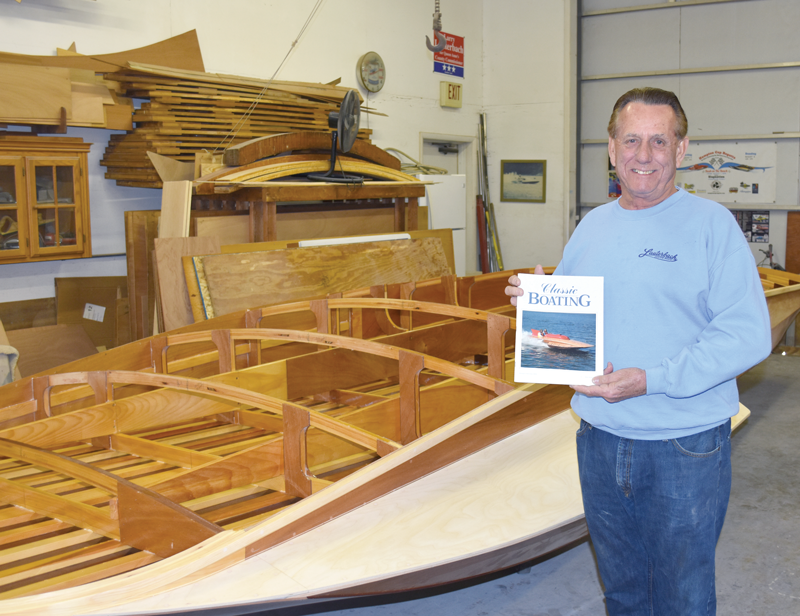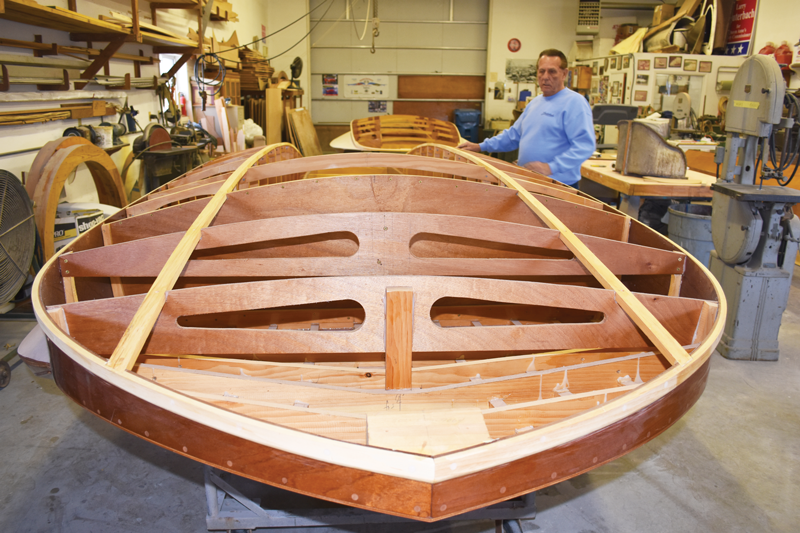Larry Lauterbach needs no introduction in the racing circuit. The Lauterbach name has been building boats since 1947, and the father-son duo of Henry and Larry built boats together for 25 years.

Henry Lauterbach raced for about five or six years during the late 1950s and early 1960s, but his primary focus was boat building. Larry says, “I was the third of four sons and the only one who wanted to build boats.” The two often worked 18 hour days, but Larry says they didn’t mind. “We cut back to about 40 hours a week when I got married,” he adds, chuckling.
The family business officially began in 1947, the year Larry was born, when Henry built his first hydroplane race boat. It wasn’t long before Lauterbach boats quickly began dominating the sport. Prior to that, Henry was building Hampton one design sailboats. He quit high school during his senior year to pursue his passion for boat building. “He was smart,” says Larry. “I’m not anywhere near as smart as my dad, but I got his genes.”
The Lauterbach shop was originally based in Portsmouth, VA, and then moved to Chester, MD, in 1990 after Henry retired. “I’ve been on the Bay my whole life,” Larry says.
Larry raced for 44 years, set nine world records, was a 12-time national champion (garnering his last award when he was 58 years old), and was inducted into the American Power Boat Association (APBA) Hall of Champions in three different decades. He got his start back in the early 1960s, racing and showcasing the families’ boats. They would build a boat for a particular racing class, race it (and perform well), and then they would be able to take orders all on word of mouth. Back then, he says, if you didn’t have a Lauterbach boat, you weren’t competitive.
A lot of that has changed now. “It used to be you’d go to a race and half the boats would be homemade, built in back yards,” says Larry. “Back in the 60s you could get a boat, motor, and trailer for $4000. Nowadays the cost is too great for a lot of people. Modern safety features and composite materials have greatly escalated the costs.” The last competitive race boat Larry built was in 2001, and it sold for $175,000. Nowadays he focuses on vintage race boats.

Of his long career, Larry says, “It’s been very rewarding. I started racing when I was 16, got drafted when I was 19, and did two tours in Vietnam.” He later returned to racing, and while he had a few bad crashes over the years, his mindset was always: “If Vietnam couldn’t kill me, racing certainly couldn’t.” He can recall two bad accidents when he was younger, but emphasizes “you have to crash a time or two to learn how to drive.” After those two early accidents, he never had another for 30 years. Larry adds, “I was either pretty good or pretty lucky!” He retired in 2005, feeling that he had nothing more to prove. “I’ll let the young guys do it now,” he says.
Looking back, one of his favorite aspects of racing was the camaraderie and family nature of the events. “You can bring the wife and kids and make a day of it. There were rivalries, sure,” he adds, “but if you ever had a problem, someone would always help.”
Currently in the Lauterbach Custom Boats shop is a 1947 Ventnor. Larry has been working on this restoration for about two years now; after modifications were made in the past, the current owner wants to go back to the original design, using original hardware. Also in the shop are boats number four and five of the Lauterbach Special, a 22-foot custom recreational hydroplane, based off of a 1980s Lauterbach hydroplane design. These boats have become very popular, because they look like a genuine hydroplane race boat, with speeds over 100-mph, but are recreational in nature with comfortable seating for two, and a transmission with neutral and reverse (which a real race boat does not have).
“This has been my bread and butter for the last 20 years—vintage race boats and restorations,” says Larry. “I didn’t make a lot of money, but I made a good living and a lot of friends. I wouldn’t change a thing.”